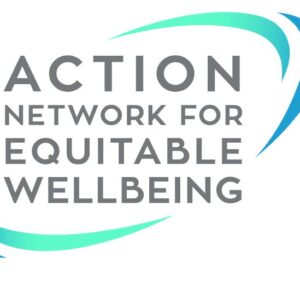Higher education is operating in a time of rapid change and uncertainty. Changes in federal and state policy, funding, and increasing polarization are reshaping campus environments and profoundly affecting many students’ experiences. As leaders, it is critical to understand how these forces are impacting student wellbeing—and what actions institutions can take to adapt and strengthen their supports for students.
The Action Network for Equitable Wellbeing (ANEW) is a networked community of higher education changemakers working together to advance systems-level transformation to improve student wellbeing. Drawing on the involvement of more than 200 colleges and universities, our experience shows that while there is no single solution, institutions can act quickly and intentionally to strengthen student support using a practical, data-driven, human-centered approach.
Through this collaborative work, we’ve identified three strategies that are helping campuses respond more effectively to the rapidly evolving needs of their students: using real-time disaggregated data, conducting empathy interviews, and building a rhythm of frequent data collection and sense-making.
Collect real-time quantitative data and analyze it thoughtfully
How students are doing can change rapidly as policies and rhetoric shift, availability of external resources change, significant events on campus or in the world occur, and new barriers or supports emerge. Relying on older data (e.g. survey data collected nine months ago) can miss important changes. Without timely insight, decisions may be based on outdated information or an incomplete understanding. Systematically collecting real-time data helps institutions stay aligned with students’ current realities.
To support this kind of real-time data collection, ANEW institutions have used the Wellbeing Improvement Survey for Higher Education Settings (WISHES)—a short survey, available at no cost, that provides institutions with timely and actionable data on a range of outcomes and experiences influencing student wellbeing. WISHES helps institutions monitor student wellbeing and stay responsive to the present moment.
But aggregate data tell only part of the story. To understand how different groups of students are faring, disaggregating data by relevant student characteristics can reveal patterns that may be hidden in campus-wide averages and allow institutions to focus support where it is most needed, such as groups of students who might be disproportionately struggling.
In fall 2023, the University of California, Irvine administered WISHES, disaggregated its data, and found that Middle Eastern students seemed to be experiencing more challenges than their peers in some measures. “Aggregate data really doesn’t tell you anything [about what to do]—you have to disaggregate,” said Doug Everhart, director of student wellness and health promotion at UC Irvine. “In order to find meaning behind the data, you have to follow up and ask questions to dig into the lived experience and the ‘why’. That focus is what makes [the ANEW] approach so useful.” The real-time disaggregated data allowed the team to better understand the Middle Eastern student experience and develop strategies responsive to their needs.
Conduct empathy interviews to develop actionable, human-centered insights
Real-time disaggregated survey data can reveal where differences exist—but it likely won’t explain them. Empathy interview is a method used in diverse sectors and settings to understand what’s behind the patterns in quantitative data. These insights are important for informing what specific changes are needed to better support students.
An empathy interview is a one-on-one session that uses deep listening and responsive prompts to explore the lived experience of an individual on a specific topic such as wellbeing. Empathy interviews uncover holistic and nuanced perspectives about a student’s life—including what they’re facing, what matters to them, and how they navigate challenges and opportunities. Empathy interviews are not formal research, but they offer a structured way for leaders to move beyond assumptions and gain insights that are authentic, revealing, and actionable from those who are most affected.
Katy Redd, executive director of the Longhorn Wellness Center at the University of Texas at Austin, reflected on the value of this strategy, “Going through this process pushed us to confront the gap between how we assume students experience college and what their day-to-day reality actually looks like for low-income students. Listening closely helped us notice invisible norms and structures that many students are expected to navigate without support. It shifted our mindset—away from surface-level solutions and toward deeper questions about how our systems function and for whom.”
Michelle Kelly, assistant vice president for health and wellbeing at the University of Texas at Arlington, described a similar shift in perspective: “There was a moment after our empathy interviews where it just clicked: we’d been asking students to navigate systems we ourselves hadn’t fully mapped. It was humbling—but also motivating. Hearing their stories reminded us that the data isn’t just about trends—it’s about real people trying to make it through college while juggling a hundred other things.”
These interviews, coupled with WISHES data, revealed insights that were difficult to uncover through other methods and have helped institutions think and act more systematically about what’s shaping students’ experiences and outcomes.
Develop a rhythm of frequent data collection and sense-making
Being responsive to student needs isn’t about changing course in response to every complaint—it’s about noticing patterns early and adjusting when needed, which requires more than one-time or yearly data collection. Institutions that build a regular rhythm of frequent data collection and sense-making are better equipped to detect shifts, learn from them, and adapt in ways that support student wellbeing.
WISHES is most effective when administered multiple times per semester over many years. Data collected frequently over time provide helpful context when trying to understand how students are impacted by significant events on campus or in the world. Institutions can better answer questions like: Are students struggling more or less than they were at similar points of the semester in previous years? In times of extraordinary change, it is easy to imagine that students are doing worse than they were previously. Frequent data collection and sense-making allow us to objectively determine if this assumption is true.
ANEW institutions that frequently collect data over time using WISHES have been able to understand in close to real time how large external events—such as the pandemic, October 7, and the shifting political environment—have impacted student wellbeing. Schools have reported that WISHES data enabled them to check their assumptions about the impact these events had on student wellbeing. In some cases, assumptions have been disproven using data, allowing schools to avoid trying to solve nonexistent problems or the wrong problem.
As the University of Maryland reflects, “We’ve administered WISHES 10 times over the past two years and have seen firsthand the benefits of frequent data collection and are excited for the future. We most recently have begun to build a dashboard to display our WISHES metrics over time and democratize these critical insights to a myriad of roles within our campus community, which we hope will lead to more effective support for students across our university.”
In the face of today’s challenges, higher education has a powerful opportunity—and responsibility—to lead with empathy, insight, and action. By embracing a data-driven, student-centered approach, institutions can move beyond assumptions and truly understand what their students need to flourish. The experiences shared by ANEW institutions demonstrate that meaningful change is not only possible but already underway. Now is the time for campuses to lean in, listen deeply, and build the systems that will support every student’s wellbeing.
This post was written by Joanna Adams (Rochester Institute of Technology), Jennifer Maltby (Rochester Institute of Technology), and Allison Smith (New York University), with the co-leadership and insights of hundreds of changemakers contributing to the Action Network for Equitable Wellbeing.
If you have any questions or comments about this blog post, please contact us.



